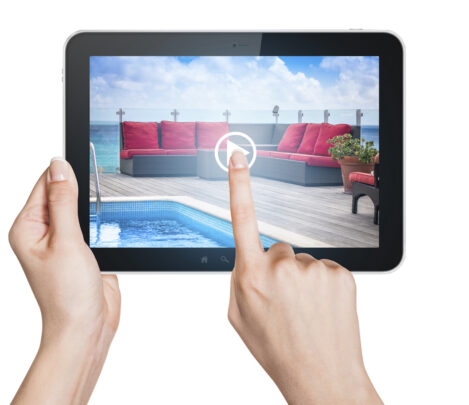12 Basic Design Principles for Effective Video-based Learning
By: Lianabel Oliver
Technological advances have made video-based learning a viable and cost-effective alternative for training employees. Video-based learning modules can substitute or complement instructor-led training.
While there is no substitute for a solid instructional design in any training program, video-based learning presents its own unique challenges, particularly if they are to be used as a standalone program.
Based on my experience, I have identified 12 basic design principles for video-based learning. I have grouped these principles into three major areas: instructional design, content development, and video production.
Instructional Design
1. Know your audience. The design of any training experience requires an assessment of your audience and their needs. Video-based learning is no exception.
2. Determine the duration of your video. The desired length of your video will determine how much can cover, and more importantly, how much you audience can digest in the allotted timeframe.
3. Keep the learning objectives focused. The duration of the video will determine the number of learning objectives. Keep the objectives focused on your key takeaways.
4. Determine your budget. What is your budget? Do you have the resources for content development and video production in-house or do you have to subcontract? The production of a high-quality video can get expensive!
Content Development
5. Keep it short! The digital lifestyle has made it difficult learner to stay focused. Lengthy training videos will tend to have a high drop-off rate.
6. Chunk the concept. Chunking has become increasingly popular in designing video content. Chunking involves breaking down content into small pieces that learner can absorb more easily.
7. Create the script and the storyboard. Make your presentation visually appealing. Keep text to a minimum. Choose your images wisely — be sensitive to gender, racial, and age diversity. Tables and graphs should be simple and readable.
8. It’s more than just a video. While the video presentation is important, learners need to practice and apply the concepts learned. Incorporate practice exercises, assessments, and handouts to supplement the video presentation and round out the learning experience.
Video Production
9. Educate, don’t entertain. Use animation and color sparingly to highlight key concepts. Your goal is to provide education, not entertainment. The presentation should be engaging, but the delivery method should not distract from the learning content.
10. Ensure the audio and the visual are consistent. There is nothing that can be more distracting when the visual shows one thing and the audio states another.
11. Video production is a team effort. You need an experienced production team that can work closely with your subject matter expert in the video production.
12. There is no such thing as a small change. Any minor change, even a typo, will result in the video having to be redone. The pre-production process can minimize changes, but often until the first pass of the video is produced and the video is meshed with the audio, you do not realize that changes must be made.
Video-based learning can be an effective tool to reduce your training costs and minimize the time investment required of your employees. By apply these 12 basic design principles, you can ensure that your video-based training programs provides an effective and meaningful experience for your learners.

